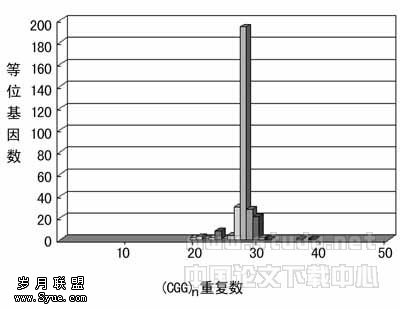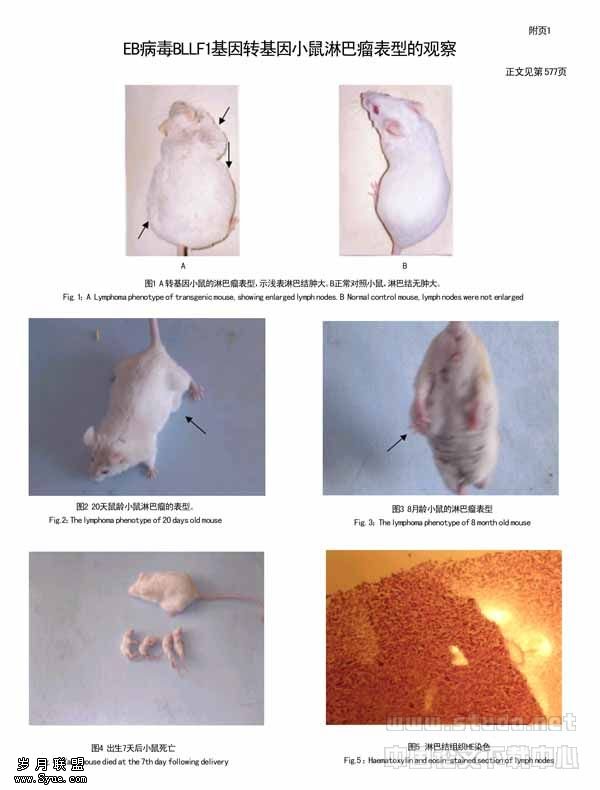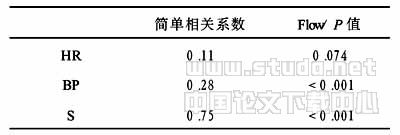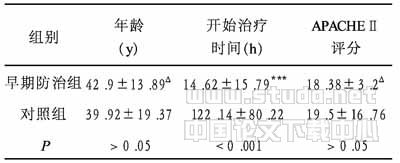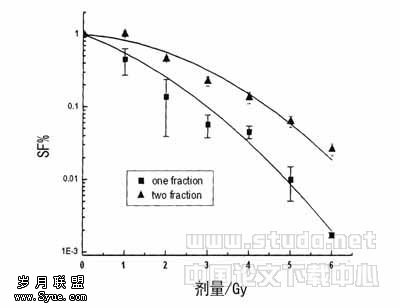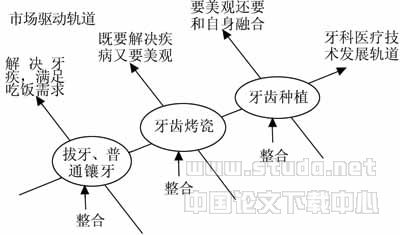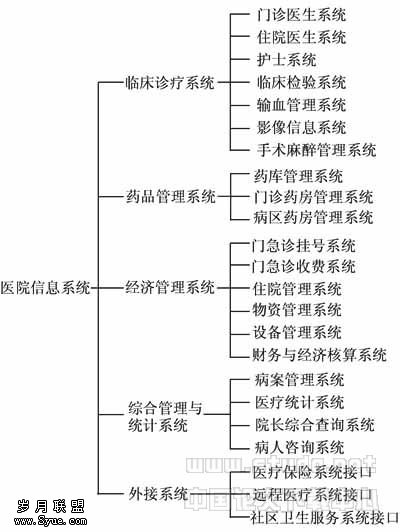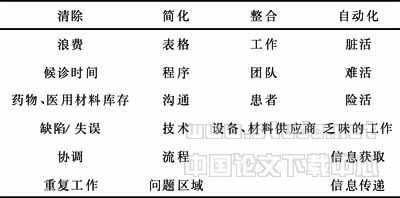Adjuvant Chemotherapy in the Elderly: Whom to Treat, What Re
作者:Susan Burdette-Radoux, Hyman B. Muss
【关键词】 Aged,•,Chemotherapy,•,adjuvant,•,Neoplasms,•,Risk,assessment
LEARNING OBJECTIVES
After completing this course, the reader will be able to:
Describe several methods for assessing a patient’s comorbidity and functional status prior to adjuvant chemotherapy.
Discuss methods of relapse and mortality risk assessment in the elderly population and explain how adjuvant treatment affects risk.
Identify adjuvant chemotherapy regimens that have been shown to be beneficial in the elderly population for treating breast, colon, and lung cancer.
ABSTRACT
As the elderly population continues to grow, adjuvant chemotherapy treatment in the elderly is becoming an increasingly important issue for the practicing oncologist. Decisions regarding adjuvant treatment involve a careful assessment of the risk for recurrent disease and side effects from treatment, balancing these risks against the beneficial effects of treatment. In this review, we discuss methods for assessing the elderly patient in terms of life expectancy, comorbid disease, and functional capacity. This assessment can then be used to help identify appropriate candidates for adjuvant chemotherapy. Tools for estimating the risk for relapse and mortality and the reduction in these risks with various forms of treatment are useful for clarifying treatment options. Elderly patients have been underrepresented in clinical trials, and patients are often given less intense and possibly inferior standard treatment as a function of age. Ongoing clinical trials targeting the elderly patient may help answer questions about the relative risks and benefits of adjuvant treatment in this age group. Recent data show that most fit elderly patients derive a benefit from standard adjuvant chemotherapy regimens that is equal to that of younger patients.
INTRODUCTION
Cancer treatment of the elderly patient is becoming an increasingly important concern for oncologists as our population ages. Although only 11.3% of the population was aged 65 or older in 1980, this number is expected to nearly double to 20% by the year 2030 [1]. The incidence of most cancers rises with age, which causes a disproportionately higher incidence of cancer in the elderly as the median age of the population rises. Thanks to the advances in treatment of other diseases, many elderly patients can be expected to live for a number of years after a cancer diagnosis, thus making adjuvant treatment of cancer an important consideration. However, other characteristics of this population, such as comorbid conditions, cognitive deficits, and social concerns, present challenges to making appropriate and beneficial treatment decisions.
PATIENT ASSESSMENT
Life Expectancy
Adjuvant treatment decisions are based on weighing the relative benefit of a treatment, in terms of reducing the risks for relapse and mortality, against its potential side effects and complications. In younger patients, overall life expectancy is not an issue since almost all patients will live at least 510 years after a cancer diagnosis and be able to experience the full benefits of treatment. Older patients, however, may have a shorter life expectancy, which will impact the relative benefit they receive. For example, if a treatment intervention is expected to result in a 40% reduction in the risk for relapse at 10 years but half of the patients are expected to die of other causes, the treatment intervention will only benefit 20% of the total number of patients. Therefore, it is important to be able to assess the life expectancy of an individual patient. This assessment will depend both on the overall life expectancy for the patient’s age group (Table 1) and on any comorbid conditions that may influence life expectancy (Table 2). Table 3 illustrates an example of how life expectancy affects risk assessment in a 70-year-old woman with node-positive breast cancer.
Table 1 illustrates the average life expectancies for men and women aged 65 and over [2]. Life expectancy is highly dependent on the age at which this estimate is made. For example, a 65-year-old woman can be expected to live to the age of 85, whereas an 80-year-old woman can be expected to live to nearly the age of 90. In addition, some patients in the more advanced age groups may have an even longer survival; for example, 25% of 85-year-olds live for almost 10 additional years. Given the wide range of life spans seen in older age groups, a determination of the life expectancy of an individual patient requires taking into consideration a number of factors other than cancer diagnosis.
Functional Assessment
Assessment of comorbid conditions and overall functional status are important components of the evaluation of the elderly patient for adjuvant chemotherapy. Comorbidities may be defined as "concomitant but unrelated pathologic or disease processes" [3] and should be considered "serious" if they significantly impact life expectancy. Assessment of comorbid medical conditions is a routine part of the evaluation of the oncology patient, but the impact of these conditions on disease and treatment outcomes is not always well appreciated. Elderly patients may have multiple and complex combinations of comorbid conditions that increase in frequency with age (Fig. 1) [4], and they are often prescribed multiple medications for these conditions that may interact with proposed chemotherapy treatments. In addition to stage of disease, the presence, number, and type [5] of comorbidities are important prognostic factors, particularly in early-stage cancer. Certain comorbidities carry a higher risk of mortality; therefore, consideration should be given to weighting them accordingly. A variety of rating scales has been validated for comorbidity assessment, and the clinician is encouraged to become familiar with one or more of these tools, several of which are listed in Table 2. Cancer itself is a comorbid condition that is weighted heavily in most rating scales for the general population, and not all of the instruments for weighted comorbidity assessment have been validated in patients with cancer. With this caveat, estimates of life expectancy based on comorbidity can be very useful in helping to estimate the relative impact of various treatment strategies for early-stage cancer. In studies specific to cancer patients, a higher absolute number of serious comorbidities increases mortality in both breast cancer [4] and colon cancer [6]. For example, women with breast cancer and three or more serious comorbidities have a 20-fold-higher 3-year death rate from causes other than breast cancer, and a fourfold higher death rate from all causes, than women with no comorbidities regardless of cancer stage [7].
Specific comorbidities may influence the choice of chemotherapy regimens or may result in dose reductions. Older women may be more likely to develop cardiomyopa-thy as a result of chemotherapy, particularly with regimens containing anthracyclines [8]. A higher incidence of heart disease in older women may result in nonanthracycline-containing regimens being chosen more frequently than in younger women. Impaired renal function may increase the toxicity of some chemotherapy regimens such as the CMF regimen (cyclophosphamide, methotrexate, and 5-fluorouracil [5-FU]) and may preclude the use of cisplatin-containing regimens. More frequent complications of fatigue and infection may result in doses being reduced more often for older patients. Strategies for adapting chemotherapy regimens to the elderly population include the use of cardiac protectants for anthracycline-containing regimens [9, 10], dose adjustments for the CMF regimen [11], and the use of area-under-the-curve calculations to adjust the carboplatin dose for renal function. The use of hematopoietic growth factors may be helpful in preventing the complications of fatigue and infection and avoiding dose reductions in higher risk elderly patients [12, 13]; patients older than 65 respond as well to growth factor support as those under the age of 65 [14].
In addition to medical comorbidities, there are a number of methods described in the literature for assessing functional status of the elderly patient (Table 2). These range from simple performance status measurements to comprehensive geriatric assessment tools comprising physical, psychological, and social aspects of function. These tools may be useful in determining not only which patients may have a more limited life expectancy but also which patients may be less likely to tolerate chemotherapy treatment.
The National Comprehensive Cancer Network (NCCN) has developed an algorithm using several functional assessment tools for evaluating the elderly oncology patient, all of which are accessible on the NCCN Web site [13, 15]. One or more of these tools may be useful in determining whether an older patient should be referred for a Comprehensive Geriatric Assessment. For example, a short screening tool developed as a part of the Cardiovascular Health Study can help identify older patients who may be considered frail and more likely to develop complications from treatment [15, 16]. The NCCN algorithm for the use of these tools is aimed at answering the following questions: (a) Is the patient going to die of cancer or with cancer? (b) Is the patient at risk for cancer complications? and (c) Is the patient able to tolerate cancer treatment? Using this algorithm, patients can be divided into three groups: functionally independent patients who are candidates for most forms of cancer treatment, patients with major functional impairment who are unlikely to tolerate chemotherapy, and an intermediate group who may need adjustments in the standard treatment approach according to their individual characteristics.
Another approach has been to simplify the functional assessment so that it can be used in a busy clinical practice. Such an approach, the Geriatric Oncology Module (GOM), was recently validated for use in a community oncology setting in patients receiving weekly treatment with pacli-taxel or paclitaxel plus carboplatin [17]. Future approaches to functional assessment may involve measurement of objective markers, such as the association of elevated inflammatory mediators with functional decline in the elderly, recently described by Cohen et al [18]. However, no single measurement has been validated across a broad range of diagnoses and treatments as a predictor of benefit from chemotherapy; the oncologist should be familiar with several of these methods so that assessment of the patient can be tailored to their particular clinical situation.
Risk Assessment
Adjuvant treatment decisions require a careful assessment of the risks for relapse and death from cancer for a particular stage of disease. If the patient has early-stage disease, which is at a high risk for recurrence, and a relatively long overall life expectancy, then adjuvant treatment may be of equal benefit to that seen in younger age groups. Conversely, if the patient has a relatively low risk for relapse and a short overall life expectancy, then adjuvant treatment may not be worthwhile. Risk assessment tools such as Adjuvant! [19] may be helpful in ascertaining the risks for relapse and mortality from breast cancer and colon cancer. Adjuvant! also estimates the relative benefits of various adjuvant treatment options based on age and tumor characteristics. The presence of comorbid conditions can be entered to assess overall risk more effectively.
A comparison of the 10-year risks for relapse and mortality from breast cancer as estimated from the Adjuvant! risk assessment tool for a 70-year-old woman, with and without significant comorbidities, is illustrated in Table 3. A patient with major comorbidities may not benefit from a more intense chemotherapy regimen, such as dose-dense doxorubicin and cyclophosphamide plus paclitaxel (AC + T), because of a higher risk for side effects and would more likely be offered a less intense regimen, such as CMF. However, in this scenario, the relapse-free survival benefit for CMF chemotherapy is small (2.7%) and the overall survival benefit is negligible (1%) when compared with the higher risk for mortality from other causes over the ensuing 10 years (51.1%). Therefore, this patient may choose not to undergo chemotherapy treatment based on these estimates. In contrast, a healthy 70-year old, who can be expected to live an additional 20 years if she is in the top quartile of life expectancy (Table 1), may give chemotherapy much stronger consideration. This patient may be able to tolerate a more intense regimen such as dose-dense AC + T, which has a larger proportional benefit than CMF for reducing the risks for relapse (11%) and mortality (5.4%), since she has a lower likelihood of side effects from treatment resulting from comorbid conditions. In addition, the benefits of adjuvant chemotherapy are greater relative to her noncancer mortality risk (11.4%) than they are for a patient with more comorbidities. Although the breast cancer risk assessments using Adjuvant! have been validated in a study by the British Columbia Cancer Agency [20], clinicians and patients should be cautioned that these estimates are based on relatively small numbers of older patients in clinical trials.
A printout of risk estimates from the Adjuvant! program can be a useful tool to initiate a discussion of the relative risks and benefits of treatment versus no treatment, and a comparison of different treatment regimens, if the patient wishes to proceed with chemotherapy. It is important to establish whether the goal of treatment is to reduce the risk for relapse or mortality risk, as this may have an impact on how the risk for chemotherapy side effects counterbalances the risks for morbidity and mortality from cancer. Patients’ perceptions of risk may be very subjective and quite different from those of the clinician. Many patients would consider a mortality risk reduction of 1% to be a beneficial effect of treatment [21, 22], whereas clinicians may set their threshold at a higher level. Perceptions of relative risk and benefit may vary in different age groups [23]. A thorough discussion of the risks for relapse and mortality, the impact that treatment may have on these risks, and the potential for side effects based on an assessment of the individual patient’s medical condition are all crucial to helping the patient make an informed decision about adjuvant chemotherapy.
ELDERLY PATIENT REPRESENTATION IN CLINICAL TRIALS
Historically, elderly patients have been underrepresented in clinical trials for the treatment of cancer [24]. Although some patients may not be eligible based on comorbidities, even those patients who are eligible for trials may be less likely to be offered participation based solely on their age [25]. Interestingly, when older patients with breast cancer were offered clinical trial participation, they had about the same acceptance rate as younger patients [25]. An analysis of patients participating in the Southwestern Oncology Group clinical trials showed that the percentage of patients 65 years of age and older participating in clinical trials was significantly less than the percentage of patients in this age group in the U.S. population as a whole [26]. This was true for all cancer types except lymphoma but was particularly pronounced for patients with breast cancer. Most but not all of the discrepancy was accounted for by patients over the age of 70. Factors cited for the lack of participation include misconceptions about the benefits and toxicity of treatments by physicians, patients, and families, comorbid conditions, and logistical barriers to receiving treatment [24, 27, 28].
ADJUVANT CHEMOTHERAPY REGIMENS IN THE ELDERLY POPULATION
Breast Cancer
Data from the meta-analysis performed by the Early Breast Cancer Trialists’ Collaborative Group (EBCTCG) in 2005 [29] suggested that elderly patients may benefit less from chemotherapy than younger patients. The hazard ratio (HR) for mortality in patients receiving any poly-chemotherapy regimen was 0.91 in patients aged 6069, as opposed to 0.85 in the 5059 age group and 0.70 in patients aged 4049. It was difficult to draw conclusions about women over the age of 70 because so few were included in the clinical trials. The reduction in the annual death rate with anthracycline-based chemotherapy in the 5069 age group was significantly less than that in the under-age-50 group, but there was still a substantial benefit of 20%. Previous consensus recommendations by both the National Institutes of Health Consensus Conference in 2000 [30] and the St. Gallen consensus conference in 2003 [31] recommended adjuvant hormonal therapy for hormone receptorpositive breast cancer in women over the age of 70 but could not make recommendations for chemotherapy in this age group because of the lack of data.
There are few trials that directly address the question of adjuvant chemotherapy in the elderly population with breast cancer. The International Breast Cancer Study Group (IBCSG) Trial VII [32] compared CMF plus tamoxifen with tamoxifen alone in estrogen receptorpositive breast cancer. Women under the age of 65 had a significant difference in disease-free survival (HR, 0.71), whereas women over the age of 65 showed no benefit from the addition of CMF to tamoxifen. However, only 48% of patients over the age of 65 received at least 85% of the expected dose, as opposed to 65% of the younger women.
A recent retrospective analysis of four Cancer and Leukemia Group B (CALGB) trials compared outcome in patients 50 years or younger, 5164 years, and 65 years or older who were treated for early-stage breast cancer [33]. Patients 65 years or older accounted for 8% of the 6,593 patients in these trials, with only 2% over the age of 70. Treatment regimens included CMF, cyclophosphamide, doxorubicin, and 5-FU (CAF), AC, and AC + T, with more than two thirds of the patients receiving an anthracycline-containing regimen. The rate of treatment-related deaths was higher (1.5%) in patients over the age of 65 than in the younger patient groups (0.2%0.7%). The >65-years-old patient group derived similar benefits from regimens employing more intensive chemotherapy and regimens using less intensive chemotherapy, in terms of both relapse-free survival and overall survival, regardless of hormone receptor status or tamoxifen use. This benefit was similar in magnitude to that of patients in the younger premenopausal age groups. A more recent trial investigating the use of dose-dense sequential AC + T and concurrent AC + T had a median age of 50, with 33% of patients aged 60 and over, and 6% of patients aged 70 and over [34]. Toxicity was not assessed according to age but was acceptable overall, with no early treatment-related deaths and only six (0.6%) later treatment-related deaths (resulting from cardiomyopathy and secondary malignancy).
How can we resolve the apparent discrepancy between earlier studies showing less benefit in older patients and more recent studies showing equivalent benefit in older and younger patients? Most large adjuvant studies accrue relatively few older patients, thus introducing selection bias to the results. Older patients may receive suboptimal doses because of toxicity or fear of toxicity in this age group [35]. Elderly patients recruited for clinical trials are likely to have more advanced disease than younger patients and relatively fewer comorbidities than the elderly population at large, thus making it difficult to apply results to the general population. These factors may vary from study to study and influence outcome.
Older trials used regimens that would be considered suboptimal for the treatment of breast cancer today. For example, analysis of the IBCSG VII Trial, showing that chemotherapy was less effective and more toxic in patients over the age of 65 [32], used CMF for only three cycles, and CMF was the regimen received by many of the patients included in the EBCTCG meta-analysis of poly-chemotherapy regimens. However, most patients in the 2005 analysis of the CALGB trials [33] received anthracycline-containing regimens that likely were more effective, possibly explaining the discrepancy between this analysis and earlier results.
More definitive results in the elderly population of patients with breast cancer must await trials targeted to this age group. To this end, a recent trial was reported by the French Adjuvant Study Group investigating the use of weekly epirubicin in patients over the age of 65 [36]. This regimen was well tolerated and conferred a disease-free survival advantage over tamoxifen alone. How this compares with standard chemotherapy regimens is unknown, however, and follow-up is too short, at 3 years, to assess the impact on overall survival. The CALGB is currently conducting a clinical trial comparing oral capecitabine with the investigator’s choice of AC for four cycles or CMF for six cycles in women over the age of 65 who are candidates for chemotherapy. That study will be important in comparing a potentially less toxic regimen with standard adjuvant chemotherapy. A simultaneous longitudinal observational trial will assess those patients who choose not to participate in the chemotherapy trial, in order to explore their preferences about chemotherapy, and will correlate this with the outcome of their treatment.
We recommend that all women over the age of 65 with breast cancer and a life expectancy exceeding 5 years be considered for standard chemotherapy regimens appropriate to their breast cancer stage if they are fit and do not have significant comorbidities. Women with hormone receptorpositive breast cancer will benefit proportionally more from hormonal therapy than from chemotherapy, and consideration should first be given to hormonal treatment. These women do derive an added benefit from chemotherapy similar to that seen in younger postmenopausal women for both relapse-free and overall survival, especially if they have involved lymph nodes [33]. Risk assessment tools such as Adjuvant! may be helpful in assessing the relative benefits of hormonal therapy alone and chemotherapy combined with hormonal therapy. Patients who desire chemotherapy in addition to hormonal therapy and those with hormone receptornegative tumors should be assessed for significant comorbidities, and chemotherapy treatment regimens should be adjusted accordingly or eliminated altogether if comorbidities are severe. Any of the currently accepted standard chemotherapy regimens may be considered, as appropriate for disease stage―such as CMF; AC; CAF; cyclophosphamide, epirubicin, and 5-FU (CEF); and AC + T―with or without dose-dense scheduling. More intensive regimens, such as dose-dense AC + T, should be reserved for women with no significant comorbidities and long life expectancies. Anthracycline-containing regimens should be avoided in patients with cardiac dysfunction (left ventricular ejection fraction <50%), and CMF should be used cautiously, with appropriate dose adjustments, in patients with renal impairment. Consideration should be given to early use of growth factor support to avoid symptomatic complications of neutropenia and anemia. Newer regimens tested specifically in the elderly population, such as weekly epirubicin or oral capecitabine, may become alternatives when data are mature.
Colon Cancer
The incidence of colon cancer increases steadily with age, and the benefit of adjuvant treatment is well established. However, despite the increasing population of patients over the age of 65 with this disease, the use of adjuvant chemotherapy declines in older age groups [37, 38]. Rates of adjuvant therapy as well as reasons given for the lack of treatment vary from hospital to hospital in the community, with reasons cited for lack of treatment including patient refusal, comorbid illness, and lack of clinical indication [39]. Elderly patients can continue to benefit from adjuvant treatment, with one study of 3,357 elderly Medicare beneficiaries showing a lower mortality rate at 5 years, 40.7% in treated patients versus 52.7% in matched untreated controls, an effect that did not diminish with increasing age [40].
Although some trials have reported greater toxicity from 5-FUbased regimens [41, 42], other trials have not shown this to be the case. In a pooled analysis of three randomized trials, Sargent et al. [43] found that elderly patients did not have higher rates of gastrointestinal toxicity and stomatitis than younger patients receiving the same regimens. Moreover, older patients derived the same benefit from adjuvant treatment in those trials. Although they had a higher risk for death from other causes (32% vs. 5%), most deaths in all age groups were a result of colon cancer. A more recent pooled analysis of seven randomized trials [44] showed that patients with high-risk resected colon cancer benefit from 5-FUbased chemotherapy regardless of age. More than half of the patients in those trials were over the age of 60.
The Multicenter International Study of Oxalipla-tin/5-Fluorouracil/Leucovorin in the Adjuvant Treatment of Colon Cancer trial, published in 2004, showed that FOLFOX (5-FU, leucovorin, oxaliplatin) chemotherapy was superior to standard 5-FU and leucovorin, with a greater disease-free survival rate at 3 years, 78.2% versus 72.9%. Approximately one third of the patients participating in that trial were over the age of 65, and treatment was generally well tolerated, with similar toxicity rates in both arms. Other groups have explored alternative regimens for elderly patients in order to minimize toxicity. Single-agent capecitabine has been reported to have a better toxicity profile than 5-FUbased regimens in the elderly population [45]. Comella et al. [46] recently reported that a combination of capecitabine and oxaliplatin was well tolerated in elderly patients over the age of 70 with meta-static colorectal cancer. In a recent phase III randomized trial, single-agent capecitabine was shown to be at least as effective as 5-FU plus leucovorin in the adjuvant setting [47] and resulted in a significantly lower incidence of grade 3 or 4 stomatitis and neutropenia, although with a higher risk for hand-foot syndrome.
Results of the pooled analyses suggest that older patients benefit from and should be offered adjuvant chemotherapy for high-risk colon cancer, with the caveat that patients in those trials were selected to conform to eligibility criteria and likely did not have significant comorbidities. The major benefit is derived from 5-FUbased therapy, with a small additional improvement in disease-free survival with the addition of oxaliplatin. Capecitabine can be substituted for 5-FUbased therapy in patients for whom toxicity may be a concern.
Non-Small Cell Lung Cancer
Recent findings from clinical trials in resectable non-small cell lung cancer have resulted in adjuvant chemotherapy now being offered as standard treatment by many oncologists. Since this is a relatively recent practice, there are little data specific to elderly patients who receive this treatment. Of the four major trials showing benefit of this treatment approach [4851], the median age ranged from 5962, with ages extending into the mid-70s and early 80s. Therefore, a substantial portion of the patients participating in these trials were over the age of 65.
Several treatment regimens were studied in these adjuvant trials. Two trials used cisplatin-based regimens. The JBR-10 study, sponsored by the National Cancer Institute of Canada, used a combination of cisplatin and vinorelbine. The median age in that trial was 61. This adjuvant treatment resulted in a hazard ratio for death of 0.69. Neutropenia was common, but severe toxicities (>grade 3) were relatively uncommon at <10%. There were two treatment-related deaths (0.8%). The study sponsored by the International Adjuvant Lung Cancer Trial Collaborative Group also used cisplatin, combined with an institutional preference of one of the following: etoposide, vinorelbine, vinblastine, or vindesine. The median age in that trial was 59, with 27% of patients over the age of 65. The overall hazard ratio for death was 0.86. The trial conducted by the Japan Lung Cancer Group used a less toxic regimen of uracil-tegafur, which was well tolerated and resulted in a hazard ratio for death of 0.71. Forty-four percent of the patients in that trial were over the age of 65. The CALGB 9633 trial presented at the 2004 Annual Meeting of the American Society of Clinical Oncology, using carboplatin and paclitaxel for patients with stage IB non-small cell lung cancer [50], had a median age of 61 and resulted in a hazard ratio of 0.62 at 34 months of follow-up.
Although patients over the age of 65 were not analyzed separately in those trials, they represented one quarter to one third of patients. One can conclude that, since these regimens were well tolerated as a whole, they can and should be offered to this age group. The choice of regimen may depend on comorbidities such as renal insufficiency, which would make a noncisplatin-containing regimen more attractive.
CONCLUSIONS
Elderly patients may benefit from adjuvant chemotherapy to the same extent as younger patients. The decision to proceed with adjuvant chemotherapy rests on a careful assessment of the patient’s comorbidities and functional status, the likelihood of relapse in relation to life expectancy, and a thorough discussion of the risks and benefits with the patient so that an informed decision can be made. Ongoing and future studies should address the particular problems faced by this age group so that they can continue to benefit from advances made in the treatment of early-stage cancer.
DISCLOSURE OF POTENTIAL CONFLICTS OF INTEREST
The authors indicate no potential conflicts of interest.
REFERENCES
Yancik R. Cancer burden in the aged: an epidemiologic and demographic overview. Cancer 1997;80:12731283.
National Center for Health Statistics. Life Tables of the United States, 2002.
STAT!Ref Online Electronic Medical Library.
Yancik R, Wesley MN, Ries LA et al. Effect of age and comorbidity in postmenopausal breast cancer patients aged 55 years and older. JAMA 2001;285:885892.
Extermann M. Measurement and impact of comorbidity in older cancer patients. Crit Rev Oncol Hematol 2000;35:181200.
Yancik R, Wesley MN, Ries LA et al. Comorbidity and age as predictors of risk for early mortality of male and female colon carcinoma patients: a population-based study. Cancer 1998;82:21232134.
Satariano WA, Ragland DR. The effect of comorbidity on 3-year survival of women with primary breast cancer. Ann Intern Med 1994;120: 104110.
Doyle JJ, Neugut AI, Jacobson JS et al. Chemotherapy and cardiotoxicity in older breast cancer patients: a population-based study. J Clin Oncol 2005;23:85978605.
Swain SM, Whaley FS, Gerber MC et al. Cardioprotection with dexrazoxane for doxorubicin-containing therapy in advanced breast cancer. J Clin Oncol 1997;15:13181332.
Schuchter LM, Hensley ML, Meropol NJ et al. 2002 update of recommendations for the use of chemotherapy and radiotherapy protectants: clinical practice guidelines of the American Society of Clinical Oncology. J Clin Oncol 2002;20:28952903.
Gelman RS, Taylor SG 4th. Cyclophosphamide, methotrexate, and 5-fluorouracil chemotherapy in women more than 65 years old with advanced breast cancer: the elimination of age trends in toxicity by using doses based on creatinine clearance. J Clin Oncol 1984;2:14041413.
Ozer H, Armitage JO, Bennett CL et al. 2000 update of recommendations for the use of hematopoietic colony-stimulating factors: evidence-based, clinical practice guidelines. American Society of Clinical Oncology Growth Factors Expert Panel. J Clin Oncol 2000;18:35583585.
Balducci L. Guidelines for the management of the older cancer patient. Cancer Treat Res 2005;124:233256.
Shank WA Jr, Balducci L. Recombinant hemopoietic growth factors: comparative hemopoietic response in younger and older subjects. J Am Geriatr Soc 1992;40:151154.
National Comprehensive Cancer Network. National Comprehensive Cancer Network Clinical Practice Guidelines in Oncology. Senior Adult Oncology, Version 1. 2005. National Comprehensive Cancer Network, Clinical Practice Guidelines. Accessed October 18, 2005.
National Heart, Lung and Blood Institute. The Cardiovascular Health Study (CHS).
Presant CA, Thompson E, Leberthon B et al. Effects of weekly paclitaxel or paclitaxel plus carboplatin on functionality and symptoms of geriatric patients with cancer as measured by a brief geriatric oncology module: a pilot experience. Cancer 2005;103:26232628.
Cohen HJ, Harris T, Pieper CF. Coagulation and activation of inflammatory pathways in the development of functional decline and mortality in the elderly. Am J Med 2003;114:180187.
AdjuvantOnline.com. Adjuvant! for Breast Cancer (Version 8.0), © 20032006 Adjuvant! Inc.
Olivotto IA, Bajdik C, Ravdin P et al. An independent population-based validation of the adjuvant decision-aid for stage I-II breast cancer. Proc Am Soc Clin Oncol 2004;22:8s.
Slevin ML, Stubbs L, Plant HJ et al. Attitudes to chemotherapy: comparing views of patients with cancer with those of doctors, nurses, and general public. BMJ 1990;300:14581460.
Ravdin PM, Siminoff IA, Harvey JA. Survey of breast cancer patients concerning their knowledge and expectations of adjuvant therapy. J Clin Oncol 1998;16:515521.
McQuellon RP, Muss HB, Hoffman SL et al. Patient preferences for treatment of metastatic breast cancer: a study of women with early-stage breast cancer. J Clin Oncol 1995;13:858868.
Trimble EL, Carter CL, Cain D et al. Representation of older patients in cancer treatment trials. Cancer 1994;74(7 suppl):22082214.
Kemeny MM, Peterson BL, Kornblith AB et al. Barriers to clinical trial participation by older women with breast cancer. J Clin Oncol 2003;21:22682275.
Hutchins LF, Unger JM, Crowley JJ et al. Underrepresentation of patients 65 years of age or older in cancer-treatment trials. N Engl J Med 1999;341:20612067.
Benson AB 3rd, Pregler JP, Bean JA et al. Oncologists’ reluctance to accrue patients onto clinical trials: an Illinois Cancer Center study. J Clin Oncol 1991;9:20672075.
Sateren WB, Trimble EL, Abrams J et al. How sociodemographics, presence of oncology specialists, and hospital cancer programs affect accrual to cancer treatment trials. J Clin Oncol 2002;20:21092117.
Early Breast Cancer Trialists’ Collaborative Group (EBCTCG). Effects of chemotherapy and hormonal therapy for early breast cancer on recurrence and 15-year survival: an overview of the randomised trials. Lancet 2005;365:16871717.
National Institutes of Health Consensus Development Panel. National Institutes of Health Consensus Development Conference statement: adjuvant therapy for breast cancer, November 1-3, 2000. J Natl Cancer Inst Monogr 2001;(30):515.
Goldhirsch A, Wood WC, Gelber RD et al. Meeting highlights: updated international expert consensus on the primary therapy of early breast cancer. J Clin Oncol 2003;21:33573365.
Crivellari D, Bonetti M, Castiglione-Gertsch M et al. Burdens and benefits of adjuvant cyclophosphamide, methotrexate, and fluorouracil and tamoxifen for elderly patients with breast cancer: the International Breast Cancer Study Group Trial VII. J Clin Oncol 2000;18:14121422.
Muss HB, Woolf S, Berry D et al. Adjuvant chemotherapy in older and younger women with lymph node-positive breast cancer. JAMA 2005;293:10731081.
Citron ML, Berry DA, Cirrincione C et al. Randomized trial of dose-dense versus conventionally scheduled and sequential versus concurrent combination chemotherapy as postoperative adjuvant treatment of node-positive primary breast cancer: first report of Intergroup Trial C9741/Cancer and Leukemia Group B Trial 9741. J Clin Oncol 2003;21:14311439.
Extermann M, Balducci L, Lyman GH. What threshold for adjuvant therapy in older breast cancer patients? J Clin Oncol 2000;18:17091717.
Fargeot P, Bonneterre J, Roche H et al. Disease-free survival advantage of weekly epirubicin plus tamoxifen versus tamoxifen alone as adjuvant treatment of operable, node-positive, elderly breast cancer patients: 6-year follow-up results of the French adjuvant study group 08 trial. J Clin Oncol 2004;22:46224630.
Schrag D, Cramer LD, Bach PB et al. Age and adjuvant chemotherapy use after surgery for stage III colon cancer. J Natl Cancer Inst 2001;93: 850857.
Potosky AL, Harlan LC, Kaplan RS et al. Age, sex, and racial differences in the use of standard adjuvant therapy for colorectal cancer. J Clin Oncol 2002;20:11921202.
Ayanian JZ, Zaslavsky AM, Fuchs CS et al. Use of adjuvant chemotherapy and radiation therapy for colorectal cancer in a population-based cohort. J Clin Oncol 2003;21:12931300.
Iwashyna TJ, Lamont EB. Effectiveness of adjuvant fluorouracil in clinical practice: a population-based cohort study of elderly patients with stage III colon cancer. J Clin Oncol 2002;20:39923998.
Popescu RA, Norman A, Ross PJ et al. Adjuvant or palliative chemotherapy for colorectal cancer in patients 70 years or older. J Clin Oncol 1999;17:24122418.
Stein BN, Petrelli NJ, Douglass HO et al. Age and sex are independent predictors of 5-fluorouracil toxicity. Analysis of a large scale phase III trial. Cancer 1995;75:1117.
Sargent DJ, Goldberg RM, Jacobson SD et al. A pooled analysis of adjuvant chemotherapy for resected colon cancer in elderly patients. N Engl J Med 2001;345:10911097.
Gill S, Loprinzi CL, Sargent DJ et al. Pooled analysis of fluorouracil-based adjuvant therapy for stage II and III colon cancer: who benefits and by how much? J Clin Oncol 2004;22:17971806.
Diaz-Rubio F, Burris H 3rd, Douillard JY et al. Safety of capecitabine (X) compared to fluorouracil/leucovorin (5-FU/LV) for the adjuvant treatment of elderly colon cancer patients (pts). J Clin Oncol 2004;22(14 suppl):258s.
Comella P, Natale D, Farris A et al. Capecitabine plus oxaliplatin for the first-line treatment of elderly patients with metastatic colorectal carcinoma: final results of the Southern Italy Cooperative Oncology Group Trial 0108. Cancer 2005;104:282289.
Twelves C, Wong A, Nowacki MP et al. Capecitabine as adjuvant treatment for stage III colon cancer. N Engl J Med 2005;352:26962704.
Arriagada R, Bergman B, Dunant A et al. Cisplatin-based adjuvant chemotherapy in patients with completely resected non-small-cell lung cancer. N Engl J Med 2004;350:351360.
Kato H, Ichinose Y, Ohta M et al. A randomized trial of adjuvant chemotherapy with uracil-tegafur for adenocarcinoma of the lung. N Engl J Med 2004;350:17131721.
Strauss GM, Herndon J, Maddaus MA et al. Randomized clinical trial of adjuvant chemotherapy with paclitaxel and carboplatin following resection in stage IB non-small cell lung cancer (NSCLC): report of Cancer and Leukemia Group B (CALGB) Protocol 9633. J Clin Oncol 2004;22(14 suppl):621s.
Winton T, Livingston R, Johnson D et al. Vinorelbine plus cisplatin vs. observation in resected non-small-cell lung cancer. N Engl J Med 2005;352:25892597.
Charlson ME, Pompei P, Ales KL. A new method of classifying prognostic comorbidity in longitudinal studies: development and validation. J Chronic Dis 1987;40:373383.
Miller MD, Paradis CF, Houck PR et al. Rating chronic medical illness burden in geropsychiatric practice and research: application of the Cumulative Illness Rating Scale. Psychiatry Res 1992;41:237248.
Desai MM, Bogardus ST Jr, Williams CS et al. Development and validation of a risk-adjustment index for older patients: the high-risk diagnoses for the elderly scale. J Am Geriatr Soc 2002;50:474481.
Guigoz Y, Lauque S, Vellas BJ. Identifying the elderly at risk for malnutrition. The Mini Nutritional Assessment. Clin Geriatr Med 2002;18: 737757.
Lawton MP. Scales to measure competence in everyday activities. Psychopharmacol Bull 1988;24:609614.
Podsiadlo D, Richardson S. The timed "Up & Go": a test of basic functional mobility for frail elderly persons. J Am Geriatr Soc 1991;39: 142148.
Fried LP, Tangen CM, Walston J et al. Frailty in older adults: evidence for a phenotype. J Gerontol A Biol Sci Med Sci 2001;56:M146M156.
Saliba D, Elliott M, Rubenstein LZ et al. The Vulnerable Elders Survey: a tool for identifying vulnerable older people in the community. J Am Geriatr Soc 2001;49:16911699.
Folstein MF, Folstein SE, McHugh PR. "Mini-mental state". A practical method for grading the cognitive state of patients for the clinician. J Psychiatr Res 1975;12:189198.
Naeim A, Reuben D. Geriatric syndromes and assessment in older cancer patients. Oncology (Williston Park) 2001;15:15671577, 1580; discussion 1581, 1586, 1591.
Patrick-Miller LJ, Broccoli TL, Much JK et al. Validation of the Distress Thermometer: a single item screen to detect clinically significant psychological distress in ambulatory oncology patients. J Clin Oncol 2004;22(14 suppl):525s.
Lachs MS, Feinstein AR, Cooney LM Jr et al. A simple procedure for general screening for functional disability in elderly patients. Ann Intern Med 1990;112:699706.
Extermann M, Meyer J, McGinnis M et al. A comprehensive geriatric intervention detects multiple problems in older breast cancer patients. Crit Rev Oncol Hematol 2004;49:6975.
Cella DF, Tulsky DS, Gray G et al. The Functional Assessment of Cancer Therapy scale: development and validation of the general measure. J Clin Oncol 1993;11:570579.


